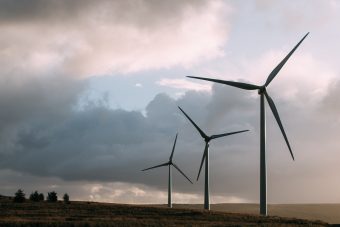
Slovenia has passed a regulation that stipulates the development of wind energy. The regulation aims to promote wind energy production facilities through a system of one-time financial compensations intended for municipalities, considering that such projects received less support among local communities. By offering municipalities a financial incentive, the government aims to support them in opening wind farms and implementing other energy projects, with the view of increasing the total number of wind farms in the country.
The incentive is awarded to municipalities after issuing a building permit for a wind farm or individual wind generator and is directly proportionate to the plant’s installed capacity. For plants with a 1-megawatt (MW) capacity or more, the incentive is 200,000 euros per MW. Plants with a capacity of less than 1MW are not eligible for this incentive. The amount that will be allocated is proportional to the installed power, which is determined in detail by the regulation, says the Slovenian government.
More:
- LAUNCHING THE WIND ENERGY INITIATIVE
- GERMANY: WIND POWER EXCEEDS THE SHARE OF COAL IN ELECTRICITY GENERATION
- WOODEN WIND TURBINE AS A MORE SUSTAINABLE FUTURE OF WIND ENERGY
Money for this initiative was provided by specialized funds intended to support renewable energy sources. This further encourages the transition to green energy, with wind being the energy of choice in this case.
In cases where wind farms or other installations spread across the territories of several municipalities, which is often the case with large wind farms, especially in countries divided into a large number of municipalities, each municipality has the right to a part of the incentive proportional to the capacity of installed generators within the borders of each municipality.
Current RES trends in Slovenia follow the country’s geography. Considering that Slovenia has a great hydro potential, the country primarily relies on water as a renewable resource. This is followed by solar energy, which is becoming increasingly popular, especially when rooftop panels are in question, something that appeals to individual users the most. At the same time, wind farms are poorly represented. They are a relatively recent phenomenon in the country’s energy mix for several reasons, including lack of space, planning and assessment impact, which all cumulatively hinder the progress in developing wind farms. Energy Portal
Energy portal



